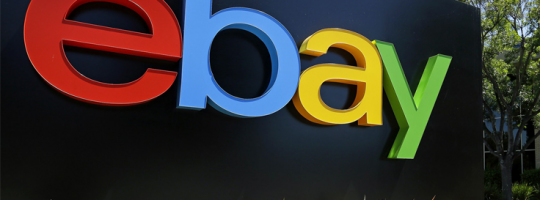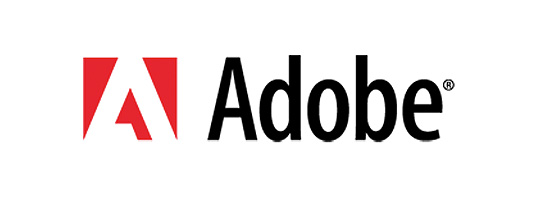The Effect Of Large-Screen Mobile Devices On Mobile Ads

One of the most noteworthy takeaways from the new Adobe Digital Index’s Q4 Digital Advertising Benchmark report is that the growing popularity of large-screen mobile devices is having a big effect on mobile ads.
The fact is that the increasing prevalence of larger smartphones, phablets and tablets means that more of the clicks on ads are now intentional, with less accidental clicks occurring from small-screen usage. This change appears to be affecting both clickthrough (CTR) and cost-per-click rates (CPCs) for mobile ads.
The report indicates a big boost for clickthrough rates for mobile devices, with an increase of 27 percent year-over-year for tablets and 26 percent for smartphones. In turn, this has driven a 19 percent increase in CTR for Google advertisers in general (Q4 year-over-year).
For marketers and businesses, this information is worth noting. The much higher CTR also represents a more efficient ad spend, as the cost-per-click (CPC) rates are only up 8 percent on Google. Clearly, there is a higher return for advertising dollars. The report indicated that Yahoo/Bing is not as efficiently optimized, as CPC there is only up 7 percent year-over-year while CTR growth is zero.

[Image Credit: Adobe Digital Index]
Director of Product Marketing, Tim Waddell, provided VentureBeat with some insight into these findings. “The tablet is a great interface,” he explained. “The engagement rate is great and the [sales] conversion is great.” Therefore, it makes sense that the same interaction pattern would apply to the new wave of larger screen mobile devices.
Although the Adobe report doesn’t break down ad stats by screen size, principal analyst Tamara Gaffney told VentureBeat that there was “an indication” that the rise in clickthroughs was a result of the growth in larger screens. This indication is significant enough for her to predict that “as a result of larger screen smartphones, the value of CPC will increase.”
“Based on larger screen phones already in the market, we know that retail conversion and media consumption rates go up as screens get larger,” she explained. Furthermore, as sales conversions increase, the clicks become more valuable.
Industry experts may find it surprising that Yahoo/Bing CPC growth rates are almost equal to Google’s, even though their CTR growth is flat. Gaffney explained that this is “indicative of marketers spreading out their money [through] more tools that allow programmatic buying.”
This is important for marketers and businesses to understand, as programmatic buying allows them to quickly maneuver as ad rates change to ensure that they experience the best return-on-investment, such as by locating the most effective places to run their advertisements.
Another interesting piece of information that comes from this report is that the spend on Google’s “Shopping Ads” increased dramatically during the recent holiday season, at a rate of almost eight times that of text ads. Shopping Ads spend is up 47 percent year-over-year.
The report indicated that Shopping Ads represent approximately one-fifth of all retail search engine marketing in the United States. Adobe predicts that these ads will grow to almost a third by the 2015 holiday season. As visually-based ads take a greater role in Google results, non-retailers may start to adopt them as well.
Conversely, Yahoo/Bing’s Product Ads, which were released last March, represented less than 1 percent of U.S. retail clicks. In the retail sector, the report indicates that Google Text Ad spending is down 6 percent, year-over-year. Gaffney stated that this drop is surprising, given that it is still the primary ad type.
Although Text Ads account for two-thirds of U.S. retail clicks, it will be interesting to see how this changes in the coming period, as Shopping Ads grow and Text Ads decline.
Adobe’s report illustrates that more mobile search occurs on Sundays and more desktop search happens on Mondays, presumably due to the fact that many more people are in offices on weekdays than on weekends.
What has the effect been from Facebook’s change to its News Feed algorithm? It seems, from this report, that retailers are adjusting to this change, which has reduced organic brand posts dramatically. Adobe predicts that Facebook organic impressions will drop by another 40 percent by next year.
“Organic is toast in Facebook for brands,” stated Gaffney. She explained that the fact that “it didn’t take long for brands to adjust [is] indicative of how important Facebook is to their mix.”
The report indicates that paid impressions on Facebook by retailers increased by 13 percent year-over-year for Q4, but soared 53 percent in comparison to Q4 of 2013. However, organic impressions were down 32 percent year-over-year.
Adobe stated in its report that these findings show that Facebook makes it difficult for advertisers to be successful on its platform without adopting their “pay-to-play” system of advertising.
Clearly, marketers and businesses will note the importance of these statistics to help them in planning their advertising campaigns as effectively as possible.












Warning: count(): Parameter must be an array or an object that implements Countable in /home/pg4b1yzvrqqo/domains/test.drivingsalesnews.com/html/wp-includes/class-wp-comment-query.php on line 399
This article nails things dead-on. However, even though organic may be ‘dead’ from a pure dollars to cents marketing standpoint it’s still very important for social media and reputation management of your company/brands. We simply cannot ignore what reach we have earned the audience we’ve earned and cultivated. At some point they WILL stop by and ‘see us’ socially on their favorite platform. So, organic may have lost luster on the money side of things but it’s still very relevant on social media.